Introduction
Autism Spectrum Disorder (ASD) is a complex condition that presents unique challenges in social skills, communication, and behavior. It affects individuals differently, making it a spectrum disorder. Understanding ASD is crucial for providing equitable support and opportunities to children with disabilities.
Early diagnosis and intervention can lead to resources that support their well-being. However, there are significant equity issues in autism diagnosis, with children from underserved communities being diagnosed later. Applied Behavior Analysis (ABA) therapy is a recognized and effective treatment for individuals with ASD.
It breaks down complex tasks into smaller steps, fostering skill acquisition and behavior modification. ABA therapy is built on key principles such as positive reinforcement, prompting techniques, generalization of skills, and data-driven analysis. It is crucial to customize ABA interventions to meet individual needs, leveraging strengths and setting clear objectives.
Consistency across different settings is essential for transferring learned skills into daily life. Empowering families and caregivers through collaboration and education is vital for successful outcomes. Measuring progress and adjusting strategies through ongoing data collection and analysis ensure individualized care.
The integration of technology solutions enhances the quality and coordination of ABA therapy, supporting best practices. By understanding and embracing the complexities of ASD, caregivers and society can recognize and support the potential of individuals with autism.
What is Autism Spectrum Disorder?
Autism Spectrum Disorder (ASD) encompasses a broad array of conditions that manifest in unique challenges with social skills, communication, and behavior, often enduring throughout one's lifetime. Individuals with ASD may exhibit a diverse range of symptoms and severities, such as difficulties in social interaction, repetitive behaviors, and sensitivities to sensory input. These challenges can also include an intense need for consistency and predictable routines.
Dr. David (Dan) R. Offord, a renowned child psychiatrist, once eloquently stated, "I do not mind if my children are in a race as long as the race is fair." This sentiment underscores the importance of providing equitable support and opportunities for children with disabilities, including those with ASD. It's about ensuring that every child can participate meaningfully in school, at home, and during leisure activities—key aspects of mental health and societal equity.
Understanding ASD is critical. It is a spectrum condition, meaning it affects individuals differently and to various degrees. There is no single known cause of autism, yet early diagnosis and intervention can lead to resources that support full and enriching lives.
The Centers for Disease Control and Prevention (CDC) estimates autism occurs in as many as 1 in 36 individuals.
The need for early and equitable diagnosis is paramount. Dr. Kristin Sohl, a professor of pediatrics at the University of Missouri School of Medicine, emphasizes the significant equity issues in autism diagnosis. Children of color and those from rural or underserved communities are often diagnosed later than their peers, which can be a substantial disadvantage.
Innovative solutions, such as the AR application designed to help patients with tactile sensitivities during dental visits, demonstrate the potential of technology to address the unique needs of individuals with ASD. This application translates tactile feedback into visual and auditory signals, catering to the autistic community's strengths.
Researchers and medical professionals continue to explore the complexities of autism, including the remarkable ability of individuals with ASD to compensate and adapt to a world not tailored to their needs. Despite challenges, these individuals bring significant assets to their communities, and it's crucial for caregivers and society to recognize and support their potential.
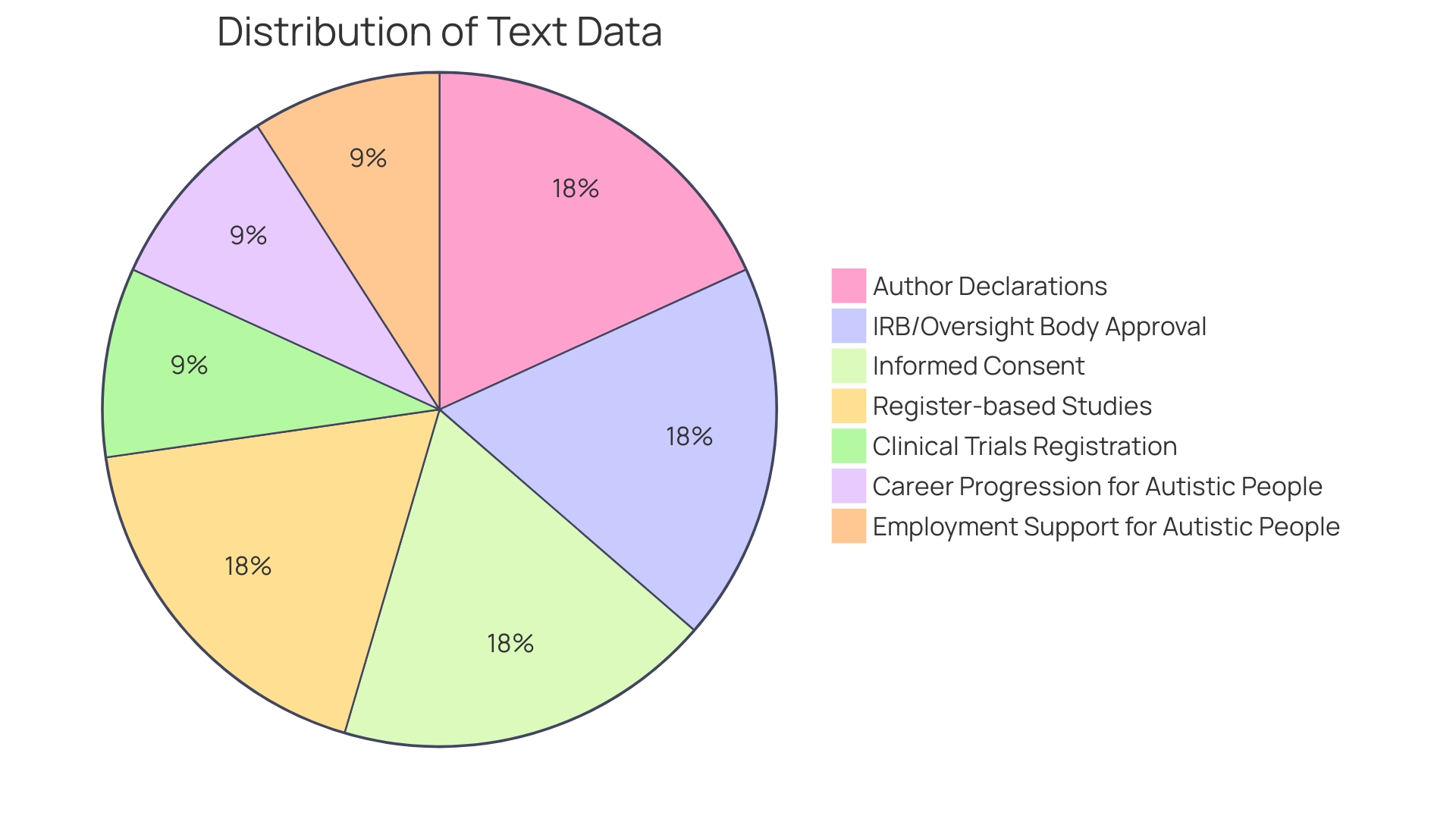
What is Applied Behavior Analysis (ABA) Therapy?
Applied Behavior Analysis (ABA) Therapy is recognized as an effective, evidence-based treatment for individuals with autism spectrum disorder and other developmental conditions. By employing the foundational concepts of learning theory, ABA therapy meticulously breaks down complex tasks into more approachable, incremental steps, fostering skill acquisition and behavior modification. A Board-Certified Behavior Analyst, with a robust background in clinical practice, emphasizes the importance of ABA therapy's adaptability and individualization, ensuring that each person receives a tailored approach to maximize their potential.
With the recent updates to the ABA Practice Guidelines by the Council of Autism Service Providers, there is a renewed emphasis on quality and consistency in the delivery of ABA services. These guidelines are instrumental in guiding practitioners, insurers, and stakeholders toward a unified standard of care that prioritizes the well-being and progress of those receiving ABA therapy.
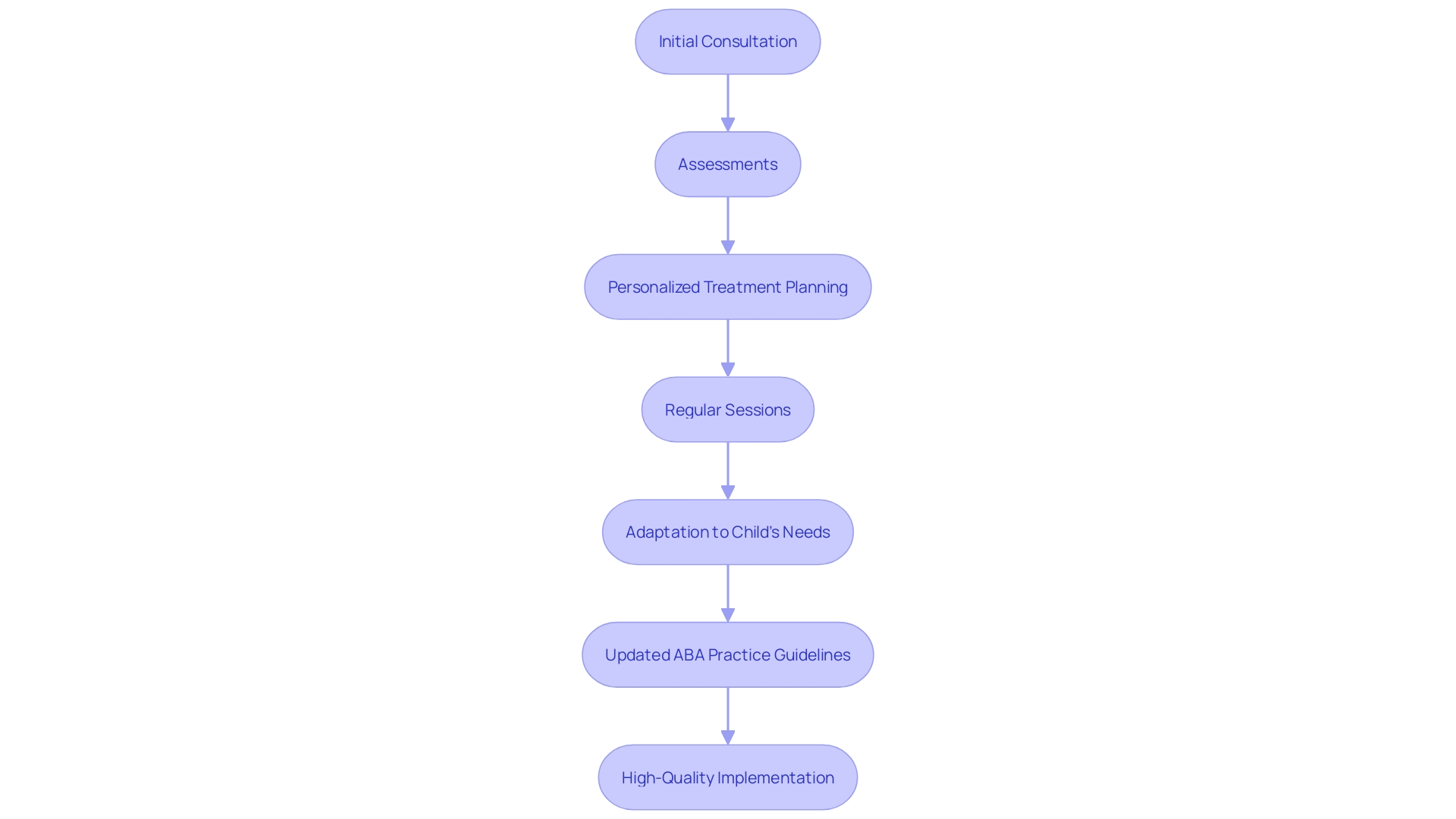
Key Principles of ABA Therapy
Applied Behavior Analysis (ABA) therapy, the leading approach to improving social, communication, and learning skills in individuals with autism and ADHD, is built on foundational principles that ensure its effectiveness. A key aspect is positive reinforcement, where desired behaviors are rewarded, thereby increasing the likelihood of these behaviors occurring again. By recognizing and reinforcing these positive actions, individuals are motivated to continue their progress.
To assist individuals in initially performing desired behaviors, ABA therapy employs prompting techniques. These prompts, which can be visual, verbal, or physical, are provided to guide the individual towards the correct response. Over time, these prompts are gradually reduced, fostering independence as the individual learns to perform the behavior without assistance.
Generalization is another crucial element of ABA therapy. The goal here is to teach skills that individuals can transfer to various environments and contexts, thereby maximizing the impact of therapy on daily life. This ensures that the progress made in a controlled therapeutic setting carries over to more natural settings, such as home, school, or the community.
Lastly, ABA therapy is driven by meticulous data collection and analysis. Progress is continuously monitored, allowing for an objective assessment of an individual’s development. This data-driven approach enables therapists to identify patterns, evaluate the effectiveness of interventions, and adjust strategies as needed to optimize outcomes.
Recent advancements in ABA therapy highlight the importance of high-quality, coordinated care. With new guidelines released by the Council of Autism Service Providers, there is a reinforced standard for ensuring ABA is implemented with the highest quality. The growing understanding of autism's spectrum nature has led to more personalized interventions, tailored to the unique needs and capabilities of each individual.
Moreover, the integration of technology in ABA practices facilitates better care management and streamlines processes, ensuring that every individual receives the best possible support.
Professionals in the field, such as New York state-licensed and Board-Certified Behavior Analysts, contribute over a decade of clinical knowledge and advocate for the creation of technology solutions that enhance ABA therapy. These solutions are designed to provide coordinated care, reflecting best practices and ensuring high-quality treatment. As the prevalence of autism continues to grow, the demand for flexible and innovative approaches to ABA therapy, such as hybrid work models, becomes increasingly important, aiming to attract and retain skilled practitioners who can continue to drive the field forward.
Benefits of ABA Therapy for Individuals with Autism
ABA therapy, standing for Applied Behavior Analysis, is a transformative approach that has demonstrated significant success in enhancing the lives of individuals with autism. At the heart of ABA therapy are four key benefits that cater to the comprehensive development of these individuals:
-
Skill Acquisition: ABA is instrumental in imparting essential life skills. It meticulously teaches communication, social engagement, self-care routines, and academic competencies, using tailored strategies to meet each individual's needs. The therapy's structured format ensures that learners acquire skills that are crucial for their everyday interactions and self-sufficiency.
-
Behavior Reduction: Targeting challenging behaviors is a cornerstone of ABA therapy. By focusing on issues such as aggression, self-injury, and repetitive actions, ABA practitioners work to reduce the frequency and intensity of these behaviors. The goal is to replace them with positive behaviors, using evidence-based interventions.
-
Independence and Self-Management: One of the therapy's greatest gifts is promoting autonomy. It empowers individuals to take charge of their behaviors and make informed choices. This facet of ABA is particularly important as it fosters a sense of control and confidence in the individuals, equipping them to navigate their environments more effectively.
-
Generalization of Skills: ABA is not confined to the therapy setting. It aims to ensure that the skills learned are transferable to various contexts—be it at home, school, or in the community. This generalization is pivotal for individuals to utilize the skills in real-world scenarios, enhancing their overall quality of life.
Groundbreaking research, including randomized controlled trials, has validated the efficacy of ABA therapy. The Council of Autism Service Providers recently updated the ABA Practice Guidelines, emphasizing the importance of quality and correct implementation of ABA therapy. Such guidelines serve as a beacon, guiding providers to uphold the highest standards of care and ensuring that interventions lead to meaningful outcomes.
With over a decade of clinical knowledge, Board-Certified Behavior Analysts are at the forefront of advancing ABA therapy. Their expertise in creating and enhancing technology solutions further supports high-quality, coordinated care. As researchers and advocates continue to drive improvements in the field, ABA therapy remains a beacon of hope, continually shaping a brighter future for individuals with autism.
Effective ABA Therapy Techniques
Applied Behavior Analysis (ABA) therapy is a versatile treatment widely recognized for its effectiveness in fostering skill development and modifying behaviors. It encompasses a variety of strategies tailored to meet the unique needs of individuals with autism. Among these, Discrete Trial Training (DTT) is a structured approach that simplifies complex skills into smaller, manageable steps.
By employing repeated practice, it reinforces learning and mastery of each step.
Incorporating learning within the individual's natural setting, Natural Environment Teaching (NET) leverages their intrinsic interests and motivations. This method seamlessly integrates skill-building into daily activities, making the learning process more engaging and relevant.
Moreover, visual supports play a crucial role in ABA therapy. Tools like visual schedules and cues enhance comprehension and assist individuals in following routines and executing tasks with greater independence. By providing clear and consistent visual information, these supports help demystify daily expectations.
Another key technique is the use of Social Stories, which are custom narratives designed to clarify social norms and behaviors. These stories serve as a blueprint for understanding social cues and expectations, thereby improving an individual's ability to navigate social interactions.
The effectiveness of ABA therapy hinges on the quality of its implementation. Recent updates to the ABA Practice Guidelines by the Council of Autism Service Providers underscore the need for high-quality, standardized care. As the prevalence of autism diagnoses rises, the continuous refinement of ABA strategies, including the development of technology solutions by experts in the field, ensures that personalized and coordinated care adapts to the evolving landscape of autism services.

Setting Up an ABA Program
Crafting a successful ABA therapy program requires meticulous planning and execution. The process commences with a thorough Assessment to pinpoint an individual's unique strengths, needs, and aspirations, which informs the focal points for therapeutic intervention. This evaluation paves the way for the creation of an Individualized Treatment Plan that maps out a personalized strategy with clear objectives and methodologies tailored to the individual's requirements.
Collaborative effort is the backbone of ABA therapy, necessitating Team Collaboration among the therapists, family members, and other caregivers, ensuring that the strategies are consistently applied across all environments for maximum effectiveness. Monitoring the individual's development is crucial, and this is where Data Collection and Progress Monitoring come into play. By systematically recording progress, therapists can observe the individual's response to treatment, pinpoint areas for further improvement, and make necessary amendments to the treatment strategy, ensuring the path to success is well-tracked and informed by empirical evidence.
These steps are reflective of best practices and are corroborated by professionals in the field, including a New York state-licensed and Board-Certified Behavior Analyst with an extensive background in both direct patient care and the development of technology solutions for coordinated care. This expertise underlines the importance of a high-quality, well-coordinated approach to ABA therapy. Moreover, research underscores the significance of structured and supportive interventions, detailing that children with stable and supportive care networks, such as those provided by kin caregivers, tend to exhibit better behavioral and mental health outcomes, which aligns with the principles of ABA therapy.
It is thus evident that a systematic, collaborative, and data-driven approach is not just preferred but essential in crafting an ABA program that truly resonates with the needs of individuals with autism.
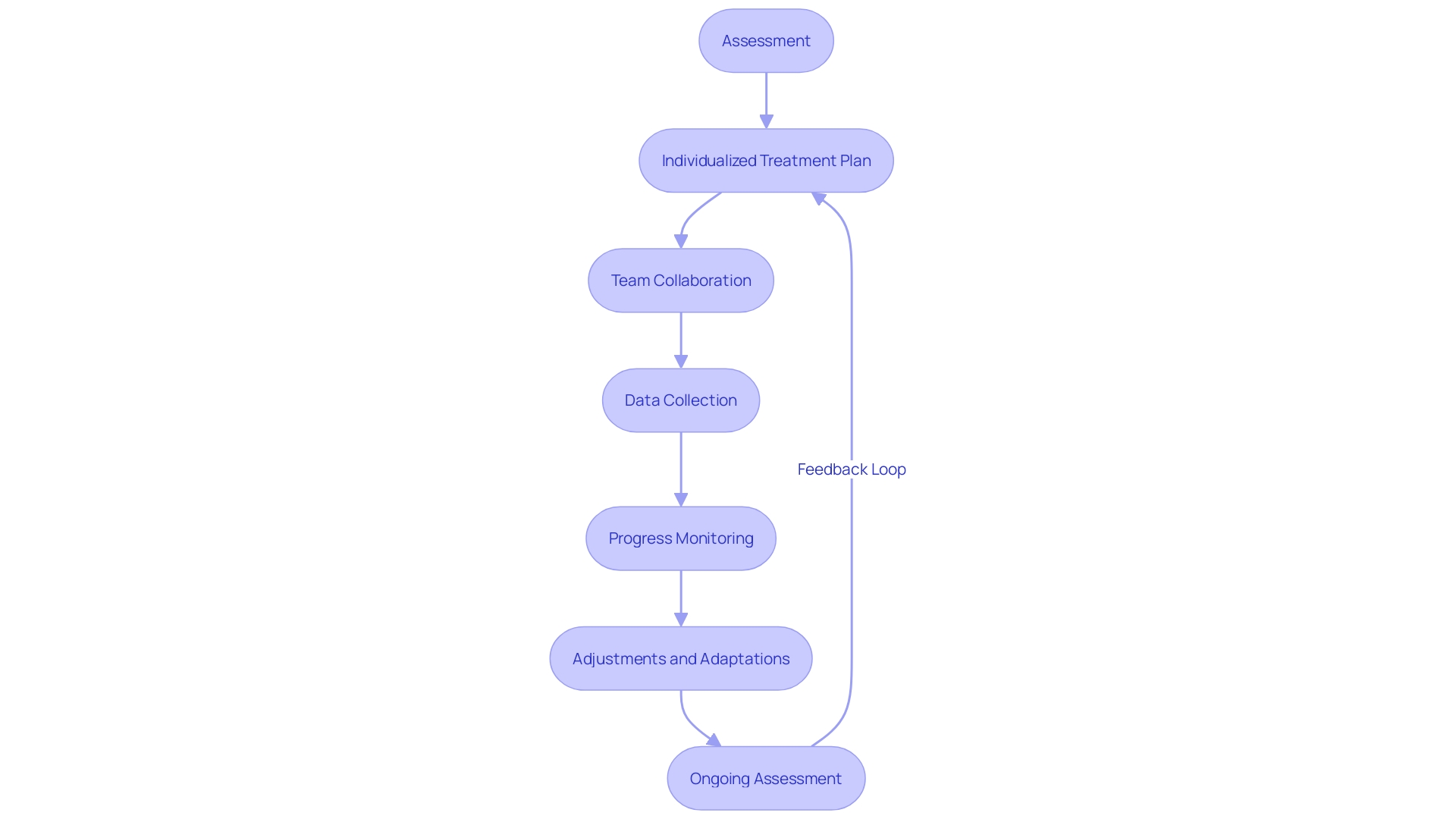
Customizing ABA Interventions to Individual Needs
Tailoring ABA therapy to each person's unique needs is essential in fostering positive behavior and skill development in individuals with autism. This highly personalized approach begins by harnessing an individual's strengths and passions, creating a foundation for engagement and motivation throughout the learning process. By recognizing what individuals with autism excel at and enjoy, therapists can create more meaningful and impactful interventions.
Setting attainable and clear objectives is another cornerstone of effective ABA therapy. These goals, known as SMART goals, are designed to be specific, measurable, achievable, relevant, and time-bound. They serve as a roadmap for both therapists and individuals, ensuring that every step taken is directed towards tangible progress.
Adaptability in strategies is the third critical component. ABA therapists must remain flexible, adjusting techniques to align with the individual's learning style, preferences, and how they respond to different interventions. This flexibility not only enhances the effectiveness of the therapy but also ensures that it remains relevant and resonates with the individual's experiences.
The combination of these elements—leveraging strengths, setting SMART goals, and adapting strategies—results in a comprehensive, customized ABA therapy plan designed to meet the nuanced needs of individuals with autism, leading to coordinated care and the highest quality of support.
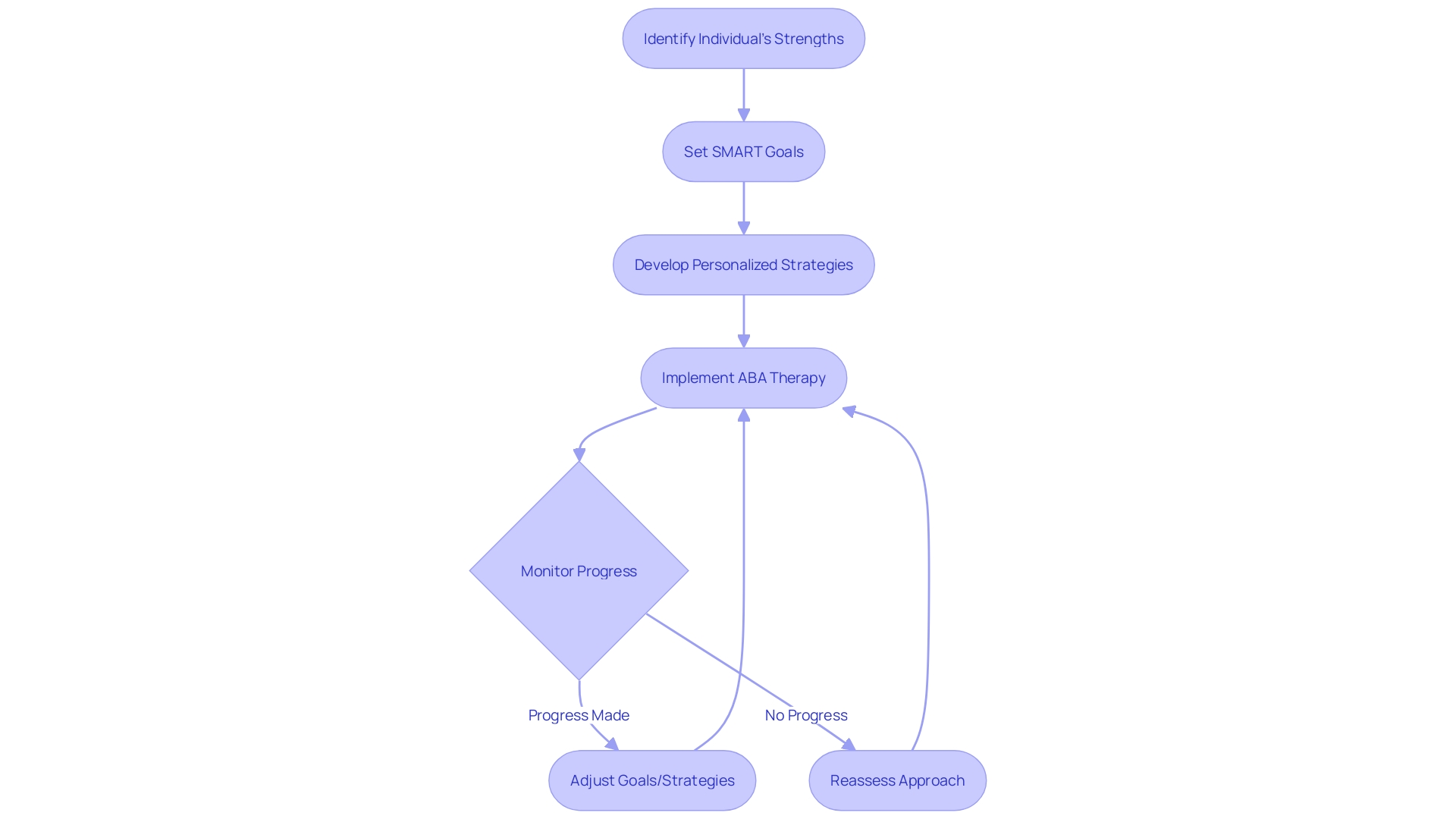
Role of Positive Reinforcement in ABA
At the heart of ABA therapy lies the principle of positive reinforcement, an approach that has transformed how individuals with autism and ADHD learn and grow. By recognizing and rewarding desired behaviors, positive reinforcement encourages their repetition, leading to meaningful behavior change over time. This strategy is not only about providing treats or privileges; it's about reinforcing a person's efforts and achievements, making the learning process both rewarding and enjoyable.
Renowned behavior analysts, with extensive experience in patient care and technology solutions for providers and health plans, have emphasized the significance of coordinated care and streamlined processes in delivering effective ABA therapy. Their insights shed light on the necessity of adapting interventions to meet the varied needs of individuals, as the spectrum of autism is broad and diverse.
The dynamic field of ABA is backed by rigorous studies, including randomized controlled trials, which have become the gold standard in evaluating the efficacy of interventions. These studies enhance our understanding of ABA's impact, ensuring that the therapy remains rooted in evidence-based practice.
Statistics in applied behavioral science reveal the versatility of ABA, which can be tailored to teach new skills, improve performance, and address challenging behaviors across all ages and abilities. Whether it's through online master's programs or direct therapy, the commitment to ethical principles and best practices remains a cornerstone of ABA.
Echoing the sentiments of thought leaders, the emphasis on positive reinforcement in ABA therapy aligns with the vision of a world where individuals are acknowledged for their positive contributions, fostering a sense of inspiration and fulfillment. This approach not only benefits those receiving therapy but also cultivates a supportive environment for caregivers and families, enhancing the overall quality of care.
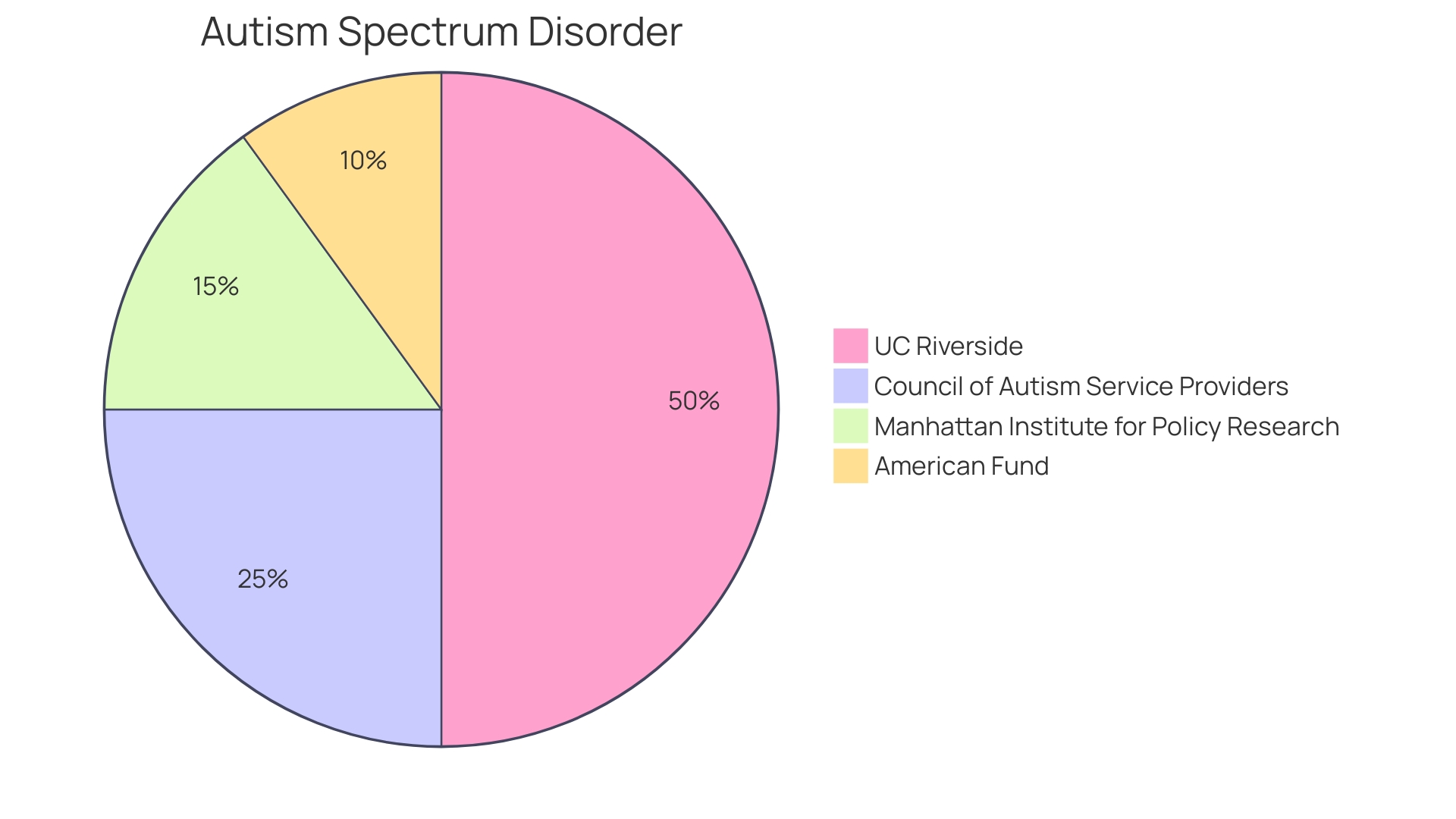
Common ABA Techniques: Discrete Trial Training, Antecedent-Based Interventions, and More
Applied Behavior Analysis (ABA) therapy is a dynamic approach that includes a range of techniques tailored to meet individual needs. One of the core methods, Discrete Trial Training (DTT), breaks skills into incremental steps, reinforcing learning through repetition. This technique is crucial for building a foundation of simple skills which can be expanded upon over time.
Creating an environment that naturally encourages positive behavior is the essence of Antecedent-Based Interventions (ABI). By adjusting the surroundings or preceding events, these interventions aim to minimize challenging behaviors before they occur, paving the way for more desirable actions.
Functional Communication Training (FCT) is a transformative aspect of ABA, where alternative communication methods are taught to replace challenging behaviors. This is particularly effective in alleviating expressions of frustration, such as aggression or tantrums, by equipping individuals with healthier communication skills.
Moreover, social skills training is an integral part of ABA therapy, focusing on instilling social norms and behaviors such as sharing, greeting, and engaging in conversations. These skills are vital for social integration and developing meaningful relationships.
These techniques contribute to a comprehensive ABA therapy program, which is supported by an extensive clinical background and the development of technology solutions to ensure coordinated care and best practices. Recent research emphasizes the critical nature of high-quality intervention research, highlighting the significant role played by individuals with autism in shaping the conversation around respect and effectiveness in treatments.
Importance of Consistency Across Settings
Achieving consistent results in ABA therapy is paramount for individuals with autism to transfer learned skills into everyday life, enhancing their self-reliance and success. Uniform application of strategies, cues, and rewards is necessary across different environments, including homes, schools, and community spaces. This uniformity allows for the generalization of skills, ensuring that therapeutic progress is not confined to the therapy setting but extends into real-world scenarios.
Board-Certified Behavior Analysts, with their extensive clinical experience, advocate for the use of technology solutions to support best practices and high-quality, coordinated care. These solutions are designed to streamline the review processes for both providers and health plans, emphasizing the importance of consistent care delivery.
In fact, recent updates to ABA therapy guidelines by the Council of Autism Service Providers highlight the necessity of high-quality, correctly implemented ABA treatment. As ABA remains a highly effective approach for autism, the guidelines serve as a beacon, ensuring that the consistency and quality of care are maintained for optimal treatment outcomes.
Research continues to evolve, with studies like randomized controlled trials becoming the gold standard in evaluating interventions' efficacy, replacing quasi-experimental studies. This shift underscores the importance of rigor and consistency in research to match the precision required in therapy application. Such meticulous research helps inform the best intervention strategies, ultimately leading to better support for individuals with autism and their caregivers.
Empowering Families and Caregivers
The role of families and caregivers in ABA therapy is paramount, with collaboration and communication forming the backbone of successful outcomes. By working hand-in-hand with ABA therapists, caregivers become aligned on strategies and support, ensuring a seamless continuation of therapeutic practices beyond clinical settings. This synergy not only addresses concerns and charts progress but also adapts to evolving needs.
Furthermore, the provision of tailored resources and education by ABA therapists enables caregivers to deepen their comprehension of autism and ABA therapy. It equips them with the skills necessary to foster their child's development and integration within the community, ultimately promoting mental health and equity as cornerstones of a supportive environment for children with disabilities.
Case studies, such as the transition experience of a young individual named Lil, underscore the significance of preparing autistic youth for new environments and routines. The insights from Dr. David (Dan) R. Offord stress the importance of equitable participation and support for children with disabilities, emphasizing the need for caregivers to be resourced adequately to nurture their child's growth. In line with this, recent advancements in technology solutions, spearheaded by experienced Board-Certified Behavior Analysts, are enhancing best practices and care coordination.
New federal rules advocating for kinship caregivers highlight the positive impact of such support on children's wellbeing, demonstrating that when caregivers are empowered, children experience better behavioral, mental, and educational outcomes.
Measuring Progress and Adjusting Strategies
Tracking the effectiveness of ABA therapy is a multifaceted process that hinges on meticulous data collection and analysis. This ongoing quantitative approach ensures individualized care and the ability to pivot techniques to better suit the needs of the individual with autism. Rigorous data collection is at the heart of this process, enabling clinicians to discern patterns and make evidence-based adjustments.
Assessment is not a one-time event but rather a continuous cycle that plays a crucial role in evaluating the impact of interventions. By consistently measuring progress, professionals can refine their approach, ensuring that each strategy is tailored to facilitate the best possible outcomes.
The synthesis of technology and human insight forms the bedrock of effective ABA therapy. Board-Certified Behavior Analysts with extensive clinical experience are pioneering technology solutions that streamline the care coordination process. These innovations not only enhance the quality of care but also ensure that interventions are grounded in best practices.
Feedback from a broad spectrum of stakeholders, including health professionals, parents, and caregivers, is indispensable. Their perspectives offer a holistic view that is critical to shaping the trajectory of therapy. It's through this collaborative effort that ABA therapy can truly be optimized to respect and meet the diverse needs of the autism community.
![]()
Conclusion
In conclusion, understanding and supporting individuals with Autism Spectrum Disorder (ASD) is crucial for providing equitable opportunities and support. ASD is a spectrum disorder that affects individuals differently. Early diagnosis and intervention are essential, but there are significant equity issues in autism diagnosis, particularly in underserved communities.
Applied Behavior Analysis (ABA) therapy is a recognized and effective treatment for individuals with ASD. It breaks down complex tasks into smaller steps, fostering skill acquisition and behavior modification. ABA therapy is built on principles such as positive reinforcement, prompting techniques, generalization of skills, and data-driven analysis.
Customizing ABA interventions to meet individual needs is vital, leveraging strengths and setting clear objectives. Consistency across different settings is essential for transferring learned skills into daily life. Empowering families and caregivers through collaboration and education is crucial for successful outcomes.
Ongoing data collection and analysis ensure individualized care, and the integration of technology solutions enhances the quality and coordination of ABA therapy.
ABA therapy offers significant benefits, including skill acquisition, behavior reduction, independence, and self-management. The therapy is evidence-based and validated through rigorous research. Techniques such as Discrete Trial Training and Antecedent-Based Interventions cater to individual needs, promoting skill development and behavior modification.
Setting up an ABA program requires careful planning and collaboration. Assessments, individualized treatment plans, team collaboration, and data collection are essential components. A systematic, collaborative, and data-driven approach ensures that the ABA program meets the needs of individuals with autism.
In conclusion, by understanding and embracing the complexities of ASD, we can recognize and support the potential of individuals with autism. ABA therapy, with its principles and personalized approach, offers transformative benefits. Through collaboration, education, and ongoing data analysis, we can provide the best possible support and opportunities for individuals with autism.




